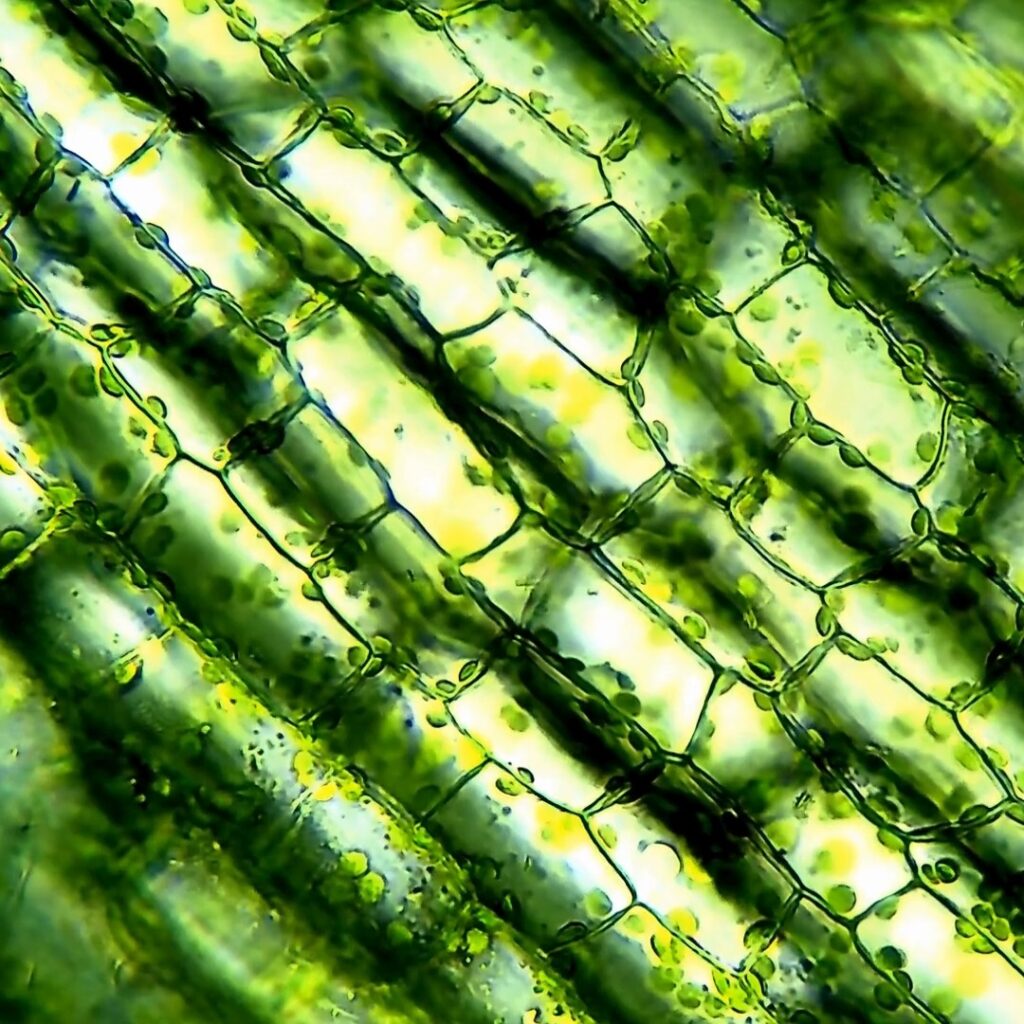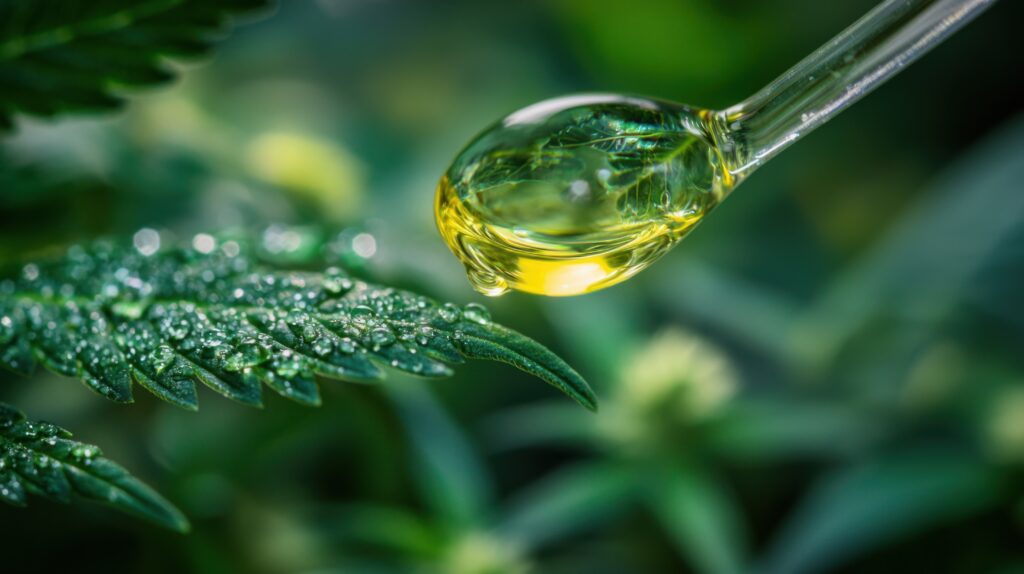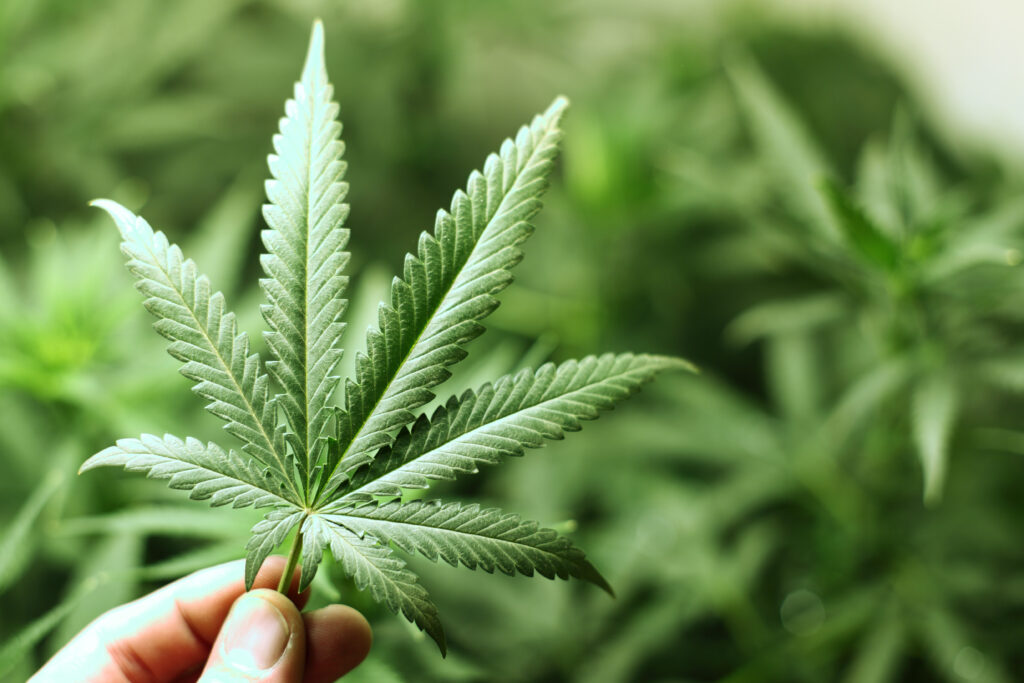BACK TO RESEARCH WITH IMPACT: FNR HIGHLIGHTS
As the FNR marks 25 years since its creation, we highlight 25 examples of FNR-supported research with impact.
Since arriving in Luxembourg in 2012, Gea Guerriero has worked closely with academic and industrial partners to research how plants, such as cannabis, can be used as renewable resources, also taking a molecular-level look at multipurpose crops. The research has wide potential for applications, such as in cosmetics, nutraceutics and pharmaceutics.
Plant molecular farming and using plants and plant cell suspension cultures as “factories” have their roots in the 1990s, which saw big advances in knowledge about plant in vitro culture. The research field then experienced some neglect and loss of interest but has seen a revival in recent years. This is due to the growing need for renewable and natural resources – and the fact that there is enormous application-oriented potential when coupled to bioprocess engineering and biotechnology.

“My research has direct links with applications: the use of plants and plant cells as renewable resources to produce added-value compounds has relevance for different sectors, namely cosmetics, nutraceutics, as well as pharmaceutics. ”Dr Gea Guerriero Senior Research and Technology Associate at the Luxembourg Institute of Science and Technology (LIST), where she has been working since 2012.

Renewed interest in plant cell culture technology
Guerriero explains that the plant cell culture technology is currently witnessing a renewed interest and will continue to evolve in the next decade. A growing number of companies are interested in harnessing the enormous potential of plant cell cultures, and these production platforms will become increasingly important for applications in cellular agriculture.
“Besides cosmetics and pharma, which already make use of plant cell suspension cultures, the food and feed industries have started to look at this technology and will continue to do so in the next future. With my research, I hope I can make a tangible contribution by validating this technology at a relevant scale for technology transfer. ”Dr Gea Guerriero Senior Research and Technology Associate at the Luxembourg Institute of Science and Technology (LIST)
Direct links with industrial applications
Guerriero’s research has direct links with industrial applications, including cosmetics, nutraceutics, pharmaceutics. Various compounds produced by plants are used as anti-microbial, anti-oxidant, anti-aging, and also as anti-cancer agents. Guerriero works in close collaboration with various industrial companies, to ensure direct application of the findings generated by her and her team.

“Most of my industrial collaborations are currently with SMEs outside Luxembourg, but I am now mapping and connecting with local actors – and there are several relevant for my research – to establish a long-lasting collaboration network fostering innovation in biotechnologies in the Grand Duchy. ”Dr Gea Guerriero Senior Research and Technology Associate at the Luxembourg Institute of Science and Technology (LIST)

One example of industrial collaboration is the FNR BRIDGES project SAPPHYRE, which Guerriero states has allowed her research to reach higher impact and broader implications, thanks to the partnership with an industrial actor, the company SiSaf.
“The uniqueness of the project is the application to plants of silicon-based nanoparticles -named “phyto-courier” – as vehicles for the delivery of bioactive molecules to crops of industrial relevance, such as tomato and hemp. We could clearly demonstrate, from both the molecular and histological point of view, that such delivery platforms are very effective in the mitigation of stress symptoms in plants, notably salinity, when applied both as foliar spray and as root amendment. ”Dr Gea Guerriero Senior Research and Technology Associate at the Luxembourg Institute of Science and Technology (LIST)
Growing cannabis for science
Cannabis sativa is called “the plant of a thousand and one molecules” as it contains many beneficial chemicals. These molecules are used in medicines, skincare products, and health supplements due to their proven effects. For instance, some compounds have antioxidant and antimicrobial properties, making them useful for health foods, cosmetics, and germ-killing products. The amount of these helpful compounds varies based on the plant’s genetics – different genotypes – and the environmental conditions it experiences while growing, such as stress from weather or pests.
In an ongoing project, HEMPHASE, funded through the FNR’s OPEN programme, Guerriero and her team are developing Cannabis sativa cell suspension cultures which are promising in terms of phytochemical profile. “Phytochemicals” refers to chemical compounds produced by plants, whole grains, fruits, vegetables, and nuts, to help them resist fungi, bacteria and plant virus infections.

“With the colleagues of the Plant Molecular Farming group and the Biotechnologies and Environmental Analytics Platform, we have been able to cultivate the cell lines in our bioreactors at the Greentech Innovation Centre with very good results in terms of yield. We are now optimising the laboratory-scale bioprocesses to be able to cultivate them at much higher scales. Moving from laboratory to pilot-scale volumes allows us to better showcase our production capacities to relevant stakeholders. ”Dr Gea Guerriero Senior Research and Technology Associate at the Luxembourg Institute of Science and Technology (LIST)

Studying ways to get compounds without growing whole plants
The project studies different Cannabis sativa genotypes from various geographic origins to find those that produce the most beneficial phenolic compounds. The plants are exposed to mild salt stress, a positive stress which can boost their growth and can impact their phytochemicals’ production. Another goal of the project is to develop a way to produce these valuable compounds from Cannabis cells without growing whole plants. These cells are grown in controlled vessels, called bioreactors, where they can produce the desired chemicals efficiently and cleanly.
Challenges to be solved: How to upscale in a cost-effective way
Guerriero’s current research efforts revolve around the use of dedifferentiated plant cells as “factories” to produce added-value compounds. One challenge here is finding an effective way to preserve plant cell lines via cryopreservation – long-term.
“Establishing a successful protocol is highly variable from species to species, but necessary to guarantee traceability and compliance to GMP practices.”
Another challenge is how to upscale these cultures in a cost-effective way, which must take into account challenges such as foaming, shear sensitivity, mass transfer.
“These aspects are being addressed in my current projects, but not all facets will be solved; therefore, I will continue to address these challenges in my future research agenda.”
Future research interests for Guerriero include investigating circular approaches in plant-based bioprocesses, by working together with relevant local and international actors.

“I am particularly interested in developing cascading approaches applied to the produced plant biomass: besides valuable metabolites, the biomass can constitute a rich resource for other bio-based products. Likewise, re-utilisation of the spent medium from bioreactors used to cultivate the cells is an aspect that fascinates me a lot. I am sure we can manage to design circular approaches leading to more products from the waste streams generated via bioprocess engineering. ”Dr Gea Guerriero Senior Research and Technology Associate at the Luxembourg Institute of Science and Technology (LIST)
on training PhDs
“My FNR-funded projects have provided me the possibility to mentor 3 post-doctoral researchers. Now, they all have permanent positions in science. I am currently also mentoring one PhD student. Working with them has been and is very enriching and has taught me to see things from a different perspective. I could learn to appreciate other approaches to a given scientific question and new ideas. This is especially the case for young doctoral students who can be so creative in their experimental approaches. I could improve my communication skills when brainstorming on more complex scientific aspects and it was fulfilling because I could promote their independence.”
On the FNR’s support for internation collaboration
“FNR has fostered the establishment of collaborations with both SMEs and academic partners. Among the most significant for my professional development, I would like to mention the fruitful collaboration with the Université Catholique de Louvain, with which I am currently working on an INTER and an OPEN project. In the framework of these projects, I could develop my mentoring activities by working in collaboration with PhD students and young post-doctoral researchers.”
Gea Guerriero’s FNR projects (main applicant)
| Project title | Call year | FNR funding instrument |
| Production of high added value phenolics in Cannabis sativa via salinity eustress: focus on plants and cell cultures | 2021 | OPEN |
| Impact of cadmium and zinc on fiber production in hemp (Cannabis sativa): an integrated approach assessing the protective effect of silicon | 2020 | INTER |
| Functionalized Silicon particles application to boost phyto-resilience | 2020 | BRIDGES |
| Studying cell wall-associated processes in fibers of nettle | 2016 | CORE |
Related Funding Instruments
Related highlights
25 examples of research with impact: Smart materials for a sustainable future
As the FNR marks 25 years since its creation, we highlight 25 examples of FNR-supported research with impact. Since arriving…
Read more
25 examples of research with impact: Advancing AI and Computer Vision: From space tech to better healthcare
As the FNR marks 25 years since its creation, we highlight 25 examples of FNR-supported research with impact. Since arriving…
Read more
25 examples of research with impact: Understanding the evolution of the workplace in the digital era
As the FNR marks 25 years since its creation, we highlight 25 examples of FNR-supported research with impact. Active in…
Read more
25 examples of research with impact: Breaking barriers in cancer research & treatment
As the FNR marks 25 years since its creation, we highlight 25 examples of FNR-supported research with impact. In Luxembourg…
Read more
25 examples of research with impact: Shaping the future of historical research in a digital age
As the FNR marks 25 years since its creation, we highlight 25 examples of FNR-supported research with impact Andreas Fickers…
Read more
25 examples of research with impact: Harnessing nature’s power for a sustainable future
As the FNR marks 25 years since its creation, we highlight 25 examples of FNR-supported research with impact. Since arriving…
Read more